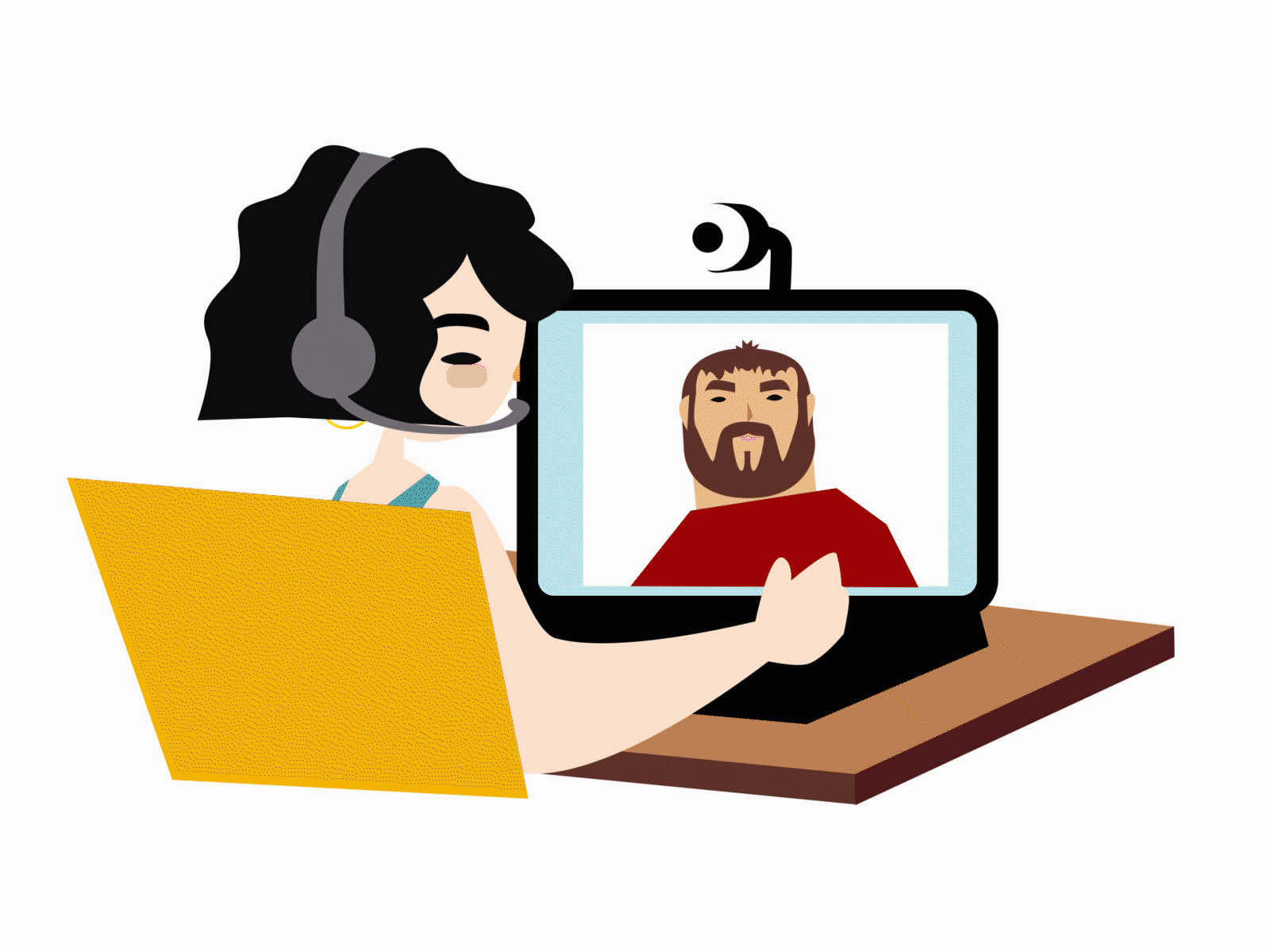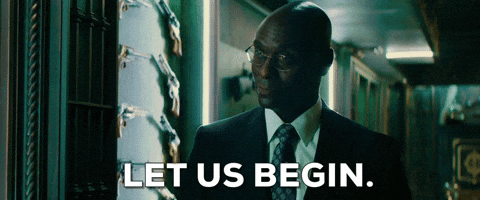What is Video Messaging and How to Use Video for Sales
Video Messaging 101: A Salesperson’s Guide to Connection and Conversions

In the fast-paced world of sales, effective communication is vital to success. Traditional methods like email and phone calls are often overlooked, while in-person meetings can be time-consuming and expensive. In recent years, video messaging has become a powerful method beyond traditional text-based communication. Statistically, it allows you to connect with prospects on a deeper level and build stronger relationships. Ultimately leading to more closed deals.
Let’s delve into what are video messages for sales and understand their nuances. Exploring how sales professionals can leverage it to enhance their outreach.

The Power of Video for Sales
Video for sales has revolutionized communication, and its impact on sales is undeniable. A video can humanize the sales process, putting a face to a name and creating a more personal connection with prospects.
Unlike text-based communication, video allows you to convey emotions, body language, and nonverbal cues that build trust and rapport. This is especially important in today’s digital age, where people are bombarded with information and have short attention spans.
So, What is Video Messaging for Sales?
Well, it’s not just a selfie video sent to your friends. In sales, video messaging is a strategic, personalized way to communicate with your prospects. Think of it as the love child of email and a face-to-face meeting, minus the awkward handshakes.
Benefits of Using Video Messaging for Sales:
- Increased response rates: Prospects are far more likely to respond to a video message than a traditional email or phone call.
- Improved conversion rates: Video messaging can help build trust and rapport with prospects. Thus leading to higher conversion rates.
- More personalized communication: It allows you to tailor your message to each prospect and address their specific needs.
- Greater engagement: It is a visually engaging medium that can capture attention and hold it for longer periods of time.
- Enhanced brand awareness: Video can help create a more memorable and positive brand image.
- Cost-effective: It is a relatively inexpensive way to reach a large audience.

Challenges of Video Messaging for Business
While there are many benefits to using video messaging, there are also a few challenges to consider:
- Time commitment: Creating high-quality video content can be time-consuming.
- Technical barriers: You need to have the right equipment and software to create and send video messages.
- Comfort level: Only some people are comfortable being on camera.
Examples of Video Messaging for Sales:
- Personalized introduction videos: Introduce yourself and explain how you can help the prospect with their specific challenges.
- Product demos and explainer videos: Showcase your product or service and explain its features and benefits.
- Customer testimonials and case studies: Share stories from satisfied customers to build trust and credibility.
- Thank you videos and follow-up messages: Thank leads and customers for their time and stay top of mind.

Understanding the Different Types of Video Messaging
Three main types of video messaging are commonly used in sales:
1. Asynchronous
It allows you to record and send a video message at your own convenience. And the recipient can watch it at their own time. This is an excellent option for busy prospects who don’t have time for a live call.
2. Synchronous
This allows you to have a real-time video conversation with another person. This can be an excellent option for building relationships and having more in-depth discussions.
3. Live video streams
This allows you to broadcast a live video to a large audience. This can be a great option for webinars, product demonstrations, and other events.
How Does it Work?
Picture this: you record a short video using your webcam or smartphone, delivering your pitch or answering a query. Instead of the sterile text in an email, your prospect receives a genuine, human face — yours — with a personal touch that resonates more than a thousand words could.
But hey, it isn’t just about seeing your lovely face on screen. It’s about conveying emotions, enthusiasm, and sincerity — elements that often get lost in the vast void of typed text.

Here’s what you should account for before starting with personalized video outreach,
- Define Your Goals: What do you want to achieve with your video messages for sales? Are you trying to generate leads, build relationships, or close deals?
- Choose the Right Tools: Many personalized video email tools like Potion are available in the market. So choose one that is right for your needs and budget.
- Prepare Your Script: Even though video messages for sales are meant to be conversational. Preparing a script is still essential to ensure you stay on topic and hit all your key points.
How to Use Video Messaging in Different Stages of the Sales Pipeline
Well, it can be used throughout the sales pipeline. From prospecting and lead generation to closing deals. Here are some specific ways to use video messaging at different stages:
- Prospecting and lead generation: You can introduce yourself to potential customers and pique their interest in your product or service.
- Building relationships and trust: You can have more personal conversations with potential customers and build trust and rapport.
- Presenting product demos and proposals: You can present your product or service to potential customers more engagingly.
- Following up and closing deals: You can keep in touch with potential customers and answer any questions they may have. You can also use video messages for sales to close deals by providing a more personal and persuasive pitch.
8 Best Video Messaging Tips for SDRs
1. Subject Lines that Pop
Your subject line is the hook that reels in your audience. Instead of the generic “Follow-Up” or “Checking In.” Try something that piques curiosity, like “Exclusive Video Message Just for You!” Who could resist that?
2. The Art of the Opening Line
When your prospect clicks play, make those first few seconds count. A cheerful greeting, perhaps a quick compliment, sets the tone for a positive interaction. Remember, enthusiasm is contagious!
3. Know Your Audience
Before hitting record, do a little Sherlock-ing on your prospect. What are their pain points? What makes them tick? Mention a recent achievement or project of theirs to show you’ve done your homework.
4. Scripting vs. Spontaneity
While spontaneity has its charm, having a loose script ensures you cover all key points. Strike a balance between professionalism and authenticity. You want to sound like an expert, not a bumbling fool.

5. Tools of the Trade
Fortunately, you don’t need a Spielberg-level setup. A decent webcam or smartphone and good lighting are your main allies. Choose a quiet location, free from the cacophony of office chaos or the eerie hum of your home appliances.
6. Editing: Keep it Simple
You’re not producing the next Hollywood blockbuster, so there’s no need for fancy editing. A few basic cuts and trims are enough to smooth out the rough edges. Remember, authenticity trumps polished perfection.
7. Call to Action (CTA) Magic
Every great video has a purpose. What’s yours? A compelling CTA guides your prospect on the next step. Whether scheduling a call, visiting your website, or sending over their thoughts, make it clear and irresistible.
8. Follow-Up Finesse
So, you’ve sent your video masterpiece. Now what? Don’t just sit back and wait. Follow up! A well-timed email or call expressing your eagerness for their thoughts keeps the momentum going. Here are a few cold email follow up templates & examples you could use.
FAQs: Answering the Burning Questions
Q: Is Video Messaging Effective for All Industries?
Absolutely! From tech to finance, video messaging transcends industries. It’s not about the sector; it’s about connecting on a human level.
Q: Can I Use Video Messaging for Cold Sales Outreach?
Indeed! Using video messaging for sales, especially cold outreach is a stellar way to break through the ‘text-only’ email clutter. Your face and voice make you memorable in a sea of plain text email. Thus helping you stand out and close more deals. Additionally, ensure that you follow proper email etiquette for business before reaching out.
Q: How Long Should My Video Message Be?
The golden rule is short and sweet. Aim for two minutes or less — enough to convey your message without inducing a digital yawn.
Q: What if My Prospect Doesn’t Like Being On Camera?
Respect their comfort zone. If they prefer traditional customer communication, stick to that. Video messaging for business is about enhancing, not replacing, your current methods.
Q: Are There Any Risks?
Like any tool, video messaging has its nuances. Ensure your video is professionally crafted, and avoid controversial topics. Never forget you’re using it to build bridges, not burn them.

Conclusion
In the vast expanse of sales tactics, video messaging for business emerges as a beacon of authenticity and connection. The days of cold, impersonal emails are waning, making room for a more human approach. So, it's time to dive in with your webcam and a dash of creativity.
By following these cold email best practices and using video messaging for sales strategically. You can revolutionize your sales process and achieve tremendous success.
You may also like,

